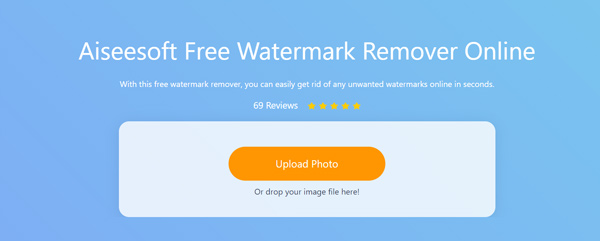If you’ve ever come across an image on Shutterstock that you love but notice the watermark, you might wonder how to get a clean version without paying. While it’s tempting to look for quick fixes online, it’s important to understand what’s involved in removing watermarks and the implications behind it. Watermarks are there to protect creators and ensure they get credited—and paid—for their work. In this guide, we’ll explore some common methods people search for, but also highlight why respecting copyright is crucial. Let’s dive into what watermark removal really entails and how to approach it responsibly.
Understanding the Legal Aspects of Watermark Removal

Before you even think about removing a watermark from an image, it’s essential to understand the legal side of things. Watermarks are more than just annoying overlays; they’re a visual claim of ownership. When you see a watermark on a Shutterstock image, it indicates that the image is copyrighted and protected by intellectual property laws.
Attempting to remove or alter a watermark without permission can lead to serious legal consequences, including copyright infringement claims, fines, and even lawsuits. Copyright laws vary by country, but generally, using copyrighted images without the proper license is illegal. This is true even if you modify or obscure the watermark—doing so can still be considered infringement.
Here are some key points to keep in mind:
- Copyright Protection: Watermarked images are protected under copyright law, and the watermark signifies ownership.
- Permission is Necessary: To legally use an image, you should purchase a license or obtain permission from the owner.
- Fair Use Limitations: Some uses may fall under fair use, but this is a complex legal area and doesn’t usually apply to commercial use or bypassing watermarks.
- Ethical Considerations: Respect for creators’ rights supports a healthy creative ecosystem and encourages artists to produce more work.
Instead of risking legal trouble, consider legitimate options like purchasing the image or finding free alternatives that are legally available for your intended use. Remember, respecting intellectual property rights not only keeps you on the right side of the law but also supports the talented creators behind those beautiful images.
Popular Online Tools for Removing Watermarks for Free

When it comes to removing watermarks from images, especially Shutterstock images, there are a bunch of online tools out there that promise quick and free results. However, it’s important to remember that the effectiveness of these tools can vary, and some might not produce perfect results. Still, if you’re just exploring or need a quick edit, here are some popular options that many users turn to:
- Inpaint Online: This is a user-friendly tool that allows you to upload your image and paint over the watermark. It then uses AI algorithms to fill in the selected area, blending it with the surrounding pixels. It works well for simple watermarks.
- Fotor: A versatile online photo editor that offers watermark removal features. You can use the clone tool or healing brush to cover up watermarks manually. Plus, it has a lot of editing options for enhancing your image afterward.
- Pixlr E: An advanced browser-based editor similar to Photoshop. It provides tools like the clone stamp and healing brush, which are perfect for removing watermarks by copying nearby pixels over the watermark.
- HitPaw Online Watermark Remover: Designed specifically for removing watermarks, this tool promises quick results. You upload your image, select the watermark, and it processes the image to remove it.
- Photopea: A powerful, free online alternative to Photoshop. It allows detailed editing, including using clone, healing, and stamp tools to manually remove watermarks. It’s more hands-on but gives you precise control.
While these tools are accessible and free, keep in mind that they might not always deliver perfect results, especially with complex watermarks or images with busy backgrounds. Also, be cautious about copyright laws—removing watermarks from images you don’t own or have permission to edit can have legal implications. Always consider ethical and legal aspects before proceeding.
Step-by-Step Guide to Removing Shutterstock Watermarks Using Online Editors
If you’ve got a Shutterstock image that you want to use without the watermark, and you’re comfortable with some editing, here’s a simple step-by-step process using online editors like Pixlr E or Photopea. Remember, this is meant for images you have permission to edit or for personal use, not for infringing on copyrights.
Step 1: Save the Watermarked Image
First, download the image with the watermark from Shutterstock. Save it to your computer or device so you can upload it later to your chosen online editor.
Step 2: Open the Online Editor
Navigate to an online editor like Pixlr E or Photopea. These tools are free and don’t require installation. Once there, open the editor and upload your image by clicking on “Open Image” or dragging it into the workspace.
Step 3: Select the Watermark Area
Use the selection tools, such as the Lasso Tool or Marquee Tool, to carefully outline the watermark. Be as precise as possible to avoid affecting the rest of the image. Zoom in if needed for more accuracy.
Step 4: Use Healing or Clone Tools
- Healing Brush / Spot Healing Tool: Click on this tool, then click or drag over the watermark. The tool samples nearby pixels and blends them to cover the watermark seamlessly.
- Clone Stamp Tool: Alt-click on an area close to the watermark to set the source, then paint over the watermark. This method gives more control but requires some practice.
Step 5: Refine Your Edits
After removing the watermark, zoom out and review the area. Use the clone or healing tools again if needed to smooth out any irregularities or mismatched textures. Adjust brightness or contrast if the edited area looks different from the rest of the image.
Step 6: Save Your Edited Image
Once satisfied, save the image by clicking on “File” > “Save As” or “Export,” choosing your preferred format (JPEG, PNG). Make sure to select a high-quality setting for the best results.
Final Tips:
- Always work on a copy of the original image to prevent accidental loss.
- Patience and practice improve results—don’t rush the process.
- Remember, removing watermarks from images you don’t own or without permission can be illegal and unethical. Use these methods responsibly.
And there you have it! With a little time and the right tools, you can remove Shutterstock watermarks online. Just keep in mind the importance of respecting copyright and only use these techniques on images you’re authorized to edit.
Tips for Ensuring High-Quality Results After Watermark Removal
Removing a watermark from an image can sometimes lead to a loss of quality or unwanted artifacts if not done carefully. To make sure your final image looks sharp and professional, here are some helpful tips:
- Choose the Right Tool: Use reputable online watermark removal tools or software that are designed to preserve image quality. Some tools are better at blending pixels and removing watermarks seamlessly.
- Start with the Original Image: Always work with the highest resolution version of the image available. This helps maintain clarity and detail after editing.
- Use the Clone or Healing Brush Wisely: When manually removing watermarks, tools like clone stamp or healing brush can be very effective. Take your time to carefully sample nearby pixels to blend the area smoothly.
- Adjust Image Settings Post-Removal: After watermark removal, tweak brightness, contrast, and sharpness to improve overall appearance. Sometimes, minor adjustments can make a big difference.
- Beware of Over-Editing: Overdoing edits can introduce noise or distortions. Aim for subtle modifications to keep the image looking natural.
- Compare Before and After: Always compare your edited image with the original (if available) to ensure no unintended artifacts or quality loss occurred.
Remember, patience is key. Rushing through the process might lead to a less-than-ideal result. With practice and the right techniques, you can achieve clean, high-quality images even after removing watermarks.
Alternative Ways to Obtain Shutterstock Images Legally
If you’re looking for high-quality images without the hassle of watermark removal, exploring legal avenues to access Shutterstock images is a smart move. Here are some legitimate options:
- Subscribe to Shutterstock: The most straightforward way is to purchase a subscription plan. Shutterstock offers various packages based on your needs, giving you access to millions of images legally and without watermarks.
- Buy Credits or Single Images: If you don’t need images regularly, you can buy individual images or credits. This is a flexible option for occasional use without committing to a subscription.
- Use Shutterstock Free Trials: Shutterstock sometimes offers free trial periods where you can download a limited number of images for free. Just remember to cancel if you don’t want to continue with a paid plan.
- Look for Shutterstock’s Free Collections: Shutterstock provides a selection of free images that you can use legally, often for personal or commercial projects, depending on the license.
- Consider Alternatives with Free or Open License Images: Websites like Unsplash, Pexels, and Pixabay offer high-quality images that are free to use legally. While they might not have the exact Shutterstock images, they can be great resources for legal, high-resolution photos.
Investing in licensed images not only saves you from potential legal issues but also ensures you respect the rights of photographers and content creators. It’s a smart practice that supports the creative community and guarantees you get quality, royalty-free images for your projects.
Conclusion and Best Practices for Using Stock Images
Utilizing stock images can significantly enhance your content, but it’s crucial to do so ethically and legally. Removing watermarks without permission is illegal and can lead to serious consequences. Instead, focus on obtaining images through proper channels to respect creators’ rights. When using stock images, always adhere to licensing agreements and attribution requirements if applicable. To maximize the value of stock images:
- Choose reputable sources that offer high-quality images with clear licensing options, such as Shutterstock, Unsplash, or Pexels.
- Use images within the scope of their license—for example, commercial use or modification rights.
- Opt for free or affordable alternatives when budget constraints exist, but ensure the images are legally obtained.
- Maintain consistency in style and theme to create a cohesive visual experience.
- Respect copyright laws by avoiding unauthorized editing or redistribution of protected images.
By following these best practices, you ensure your content remains professional, legally compliant, and respectful to original creators. Remember, ethical use of stock images not only protects you legally but also fosters trust with your audience and the broader creative community. Always prioritize legal avenues for acquiring images and steer clear of methods that infringe on copyright to sustain a reputable online presence.

